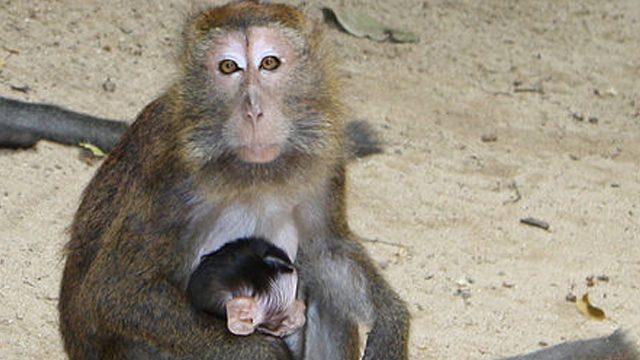SUMMARY
This is AI generated summarization, which may have errors. For context, always refer to the full article.

MANILA, Philippines – The ban on the movement of monkeys (Philippine macaque) in the Philippines could last up to 4 years, an agriculture official said on Thursday, September 10.
Days after the Department of Health (DOH) confirmed that monkeys held captive in a conditioning facility are infected with the Ebola Reston Virus (ERV), the agriculture department’s Bureau of Animal Industry (BAI) placed the facility and two other breeding facilities under quarantine.
It has also stopped the local transport and export of captive monkeys in the Philippines. Agriculture Undersecretary for Livestock Jose Reaño said this could last up to 4 years.
“We’re not going to lift it right now. Siguro matatagalan ‘yan hangga’t di namin natatapos surveillance sa buong Pilipinas. Aabutin ‘yan ng 3 years, 4 years, kasi tuloy-tuloy. Kung maglalabas ka, you have to have it tested. Mahal ‘yun. Testing of animals against Ebola is very expensive,” Reaño told reporters on Thursday.
(We’re not going to lift it right now. That will take time, until we finish surveillance in the whole Philippines. It could take 3 years, 4 years, because it’s ongoing. If you’re going to export monkeys, you have to have it tested. That’s expensive. Testing of animals against Ebola is very expensive.)
Tests still ongoing
Test results from Japan and Australia confirmed at least 10 monkeys in the conditioning facility have the ERV – the “good cousin” among the strains of the Ebola virus.
It was the first case of Ebola Reston among Philippine macaques since 1997, according to the agriculture department.
One of the 10 died, while the rest are recovering, Health Secretary Janette Garin told reporters on Thursday, September 10.
There are about 300 monkeys in the unnamed conditioning facility. In mid-August, 10 monkeys from that facility died. They showed signs and symptoms that suggested their deaths were ERV-related.
This prompted the DOH to test 14 other monkeys from the facility, and confirmatory tests showed 10 of them have the virus.
The DOH, together with the Department of Agriculture (DA) and the BAI, traced two other breeding facilities as the source of the infected monkeys to:
- Facility A: population of 3,000 monkeys
- Facility B: population of 4,000 monkeys
A sample from the total population will be tested in batches. To date, 35 monkeys from Facility A and 256 monkeys from Facility B were already tested for the virus.
Before testing the monkeys, government first tested the human handlers and personnel in these facilties – 30 workers from Facility A and 32 workers from Facility B.
“All the human handlers and all humans and personnel exposed to the monkeys were negative for Ebola Reston Virus,” Garin said.
The Philippines is said to be the only known geographic source of ERV.
The first outbreak was detected in 1989 among laboratory monkeys in the US. The source was traced to a Philippine exporter that shipped infected monkeys to Virginia, Pennsylvania, and Texas.
Surveillance of bats
On Thursday, Reaño warned the public about keeping monkeys as pets. As for people who already have one, he advised them to have the monkeys checked and to release them to their real environment.
The Department of Environment and Natural Resources will also start the surveillance of bats, since the DOH suspects bats as the source of the virus that infected the monkeys.
“Tinitingnan din ng DA ‘yung mga nangyayaring urbanization kasi posibleng ‘pag naiistorbo natin yung kinalalagyan nung mga bats, lumilipad sila at nanghahawa ng ibang hayop,” Garin said.
(The DA is also looking at urbanization, because it’s possible that when we disturb the habitat of bats, they leave and infect other animals.)
Bats are the common hosts of the Ebola virus, including the Zaire ebolavirus – the strain that’s causing the 2014 West African Ebola outbreak. (READ: 5 misconceptions about Ebola) – Rappler.com
Add a comment
How does this make you feel?
There are no comments yet. Add your comment to start the conversation.